The Art of Crafting Authentic Sichuan-Style Stir-Fried Pork with Broad Bean Paste: A Culinary Journey Through Flavors and Techniques*
Sichuan cuisine, renowned for its bold flavors and complex layering of spices, has captivated food enthusiasts worldwide with dishes that balance heat, numbness, sweetness, and umami. Among its many treasures, Dàdòubàn Chǎo Ròupiàn* (Stir-Fried Pork with Broad Bean Paste) stands as a testament to the region’s culinary ingenuity. This dish, often referred to as a staple in Sichuanese households, combines tender pork slices with fermented broad bean paste, creating a symphony of textures and tastes that linger on the palate. While seemingly simple, its preparation demands precision, an understanding of traditional techniques, and respect for the ingredients’ quality. This article explores the history, ingredients, cooking methods, and cultural significance of this iconic dish, offering insights into how it has become a beloved symbol of Sichuan’s gastronomic identity.
A Brief History of the Dish
The origins of Stir-Fried Pork with Broad Bean Paste can be traced back to the Qing Dynasty, when Sichuan’s cuisine began to evolve into the fiery, aromatic style it is known for today. Broad bean paste, or dòubànjiàng, a fermented condiment made from broad beans, chili peppers, and salt, emerged as a cornerstone of Sichuanese cooking during this period. Its creation was both a culinary innovation and a practical solution to preserve ingredients in a region with a humid climate. The paste’s deep, savory flavor, combined with its ability to withstand long cooking times, made it an ideal base for stews, stir-fries, and marinades.
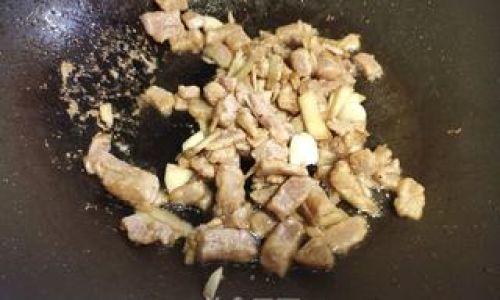
The dish itself likely originated in rural Sichuan, where peasants sought hearty, affordable meals that could be prepared quickly. Pork, a common protein source, was sliced thinly to ensure rapid cooking, while the broad bean paste provided a robust flavor boost. Over time, the recipe was refined, incorporating aromatics like garlic, ginger, and scallions, as well as vegetables such as bell peppers or bamboo shoots for added texture. Today, it remains a staple in chuāncài (Sichuan cuisine) menus, celebrated for its ability to showcase the region’s signature málà (numbing-spicy) profile while remaining accessible to home cooks.
Key Ingredients and Their Roles
- Broad Bean Paste (Dòubànjiàng): The soul of the dish, this fermented paste imparts a salty, spicy, and deeply umami flavor. High-quality dòubànjiàng, such as the Pixian variety from Sichuan, is aged for years, developing a complex taste that cannot be replicated with substitutes.
- Pork: Traditionally, pork belly or tenderloin is used. The former offers richness and fat, while the latter provides a leaner, tender texture. Slicing the meat thinly ensures quick cooking and even seasoning.
- Aromatics: Garlic, ginger, and scallions are essential for building layers of aroma. They are often added at different stages of cooking to release their flavors gradually.
- Sichuan Peppercorns (Huājiāo): These provide the dish’s characteristic numbing sensation, balancing the heat of the chili paste.
- Vegetables: Bell peppers, onions, or bamboo shoots add crunch and freshness, cutting through the richness of the pork and paste.
- Sauces and Seasonings: Soy sauce, rice wine, and a touch of sugar enhance the dish’s depth, while cornstarch thickens the sauce to coat the ingredients lightly.
The Cooking Process: A Step-by-Step Guide
Preparing the Pork
The key to tender pork lies in marination. Slice the meat against the grain into thin, uniform pieces. This ensures even cooking and prevents toughness. Marinate the pork in a mixture of soy sauce, rice wine, cornstarch, and a drizzle of sesame oil for at least 15 minutes. The cornstarch creates a protective coating, sealing in juices during stir-frying.
Mastering the Wok
A well-seasoned carbon-steel wok is ideal for achieving the dish’s signature wok hei (breath of the wok), a smoky aroma imparted by high-heat cooking. Heat the wok until smoking, then add a neutral oil like peanut or vegetable oil. Swirl the oil to coat the surface, ensuring the pork does not stick.
Stir-Frying the Pork
Add the marinated pork to the wok, spreading it in a single layer. Allow it to sear undisturbed for 30 seconds to develop a golden crust, then stir-fry vigorously until nearly cooked through. Overcrowding the wok will steam the meat, so cook in batches if necessary. Remove the pork and set it aside.
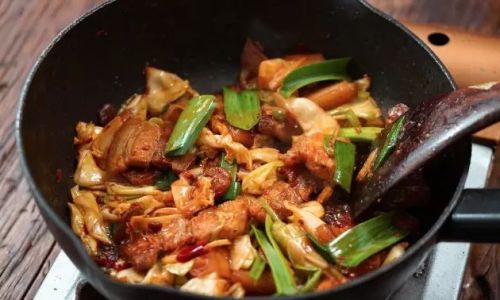
Building the Flavor Base
Reduce the heat to medium and add a tablespoon of oil. Fry the Sichuan peppercorns until fragrant, then discard them (or leave them in for added texture). Add minced garlic, ginger, and the white parts of the scallions, stir-frying until golden. This aromatic mixture forms the dish’s flavor foundation.
Incorporating the Broad Bean Paste
Stir in the broad bean paste, using the wok’s heat to toast it lightly. This step is crucial for releasing the paste’s full flavor and eliminating any raw fermented taste. Be cautious not to burn the paste; adjust the heat as needed.
Combining Ingredients
Return the pork to the wok, tossing to coat it in the paste. Add sliced vegetables and a splash of rice wine to deglaze the pan. Stir-fry until the vegetables are tender-crisp.
Finishing the Sauce
Drizzle soy sauce and a pinch of sugar into the wok, adjusting to taste. For a glossy finish, thicken the sauce with a cornstarch slurry if desired. Garnish with the green parts of the scallions and a sprinkle of sesame seeds.
Serving
Transfer the dish to a serving platter and serve immediately with steamed rice. The contrast between the tender pork, spicy paste, and crisp vegetables is best enjoyed while hot.
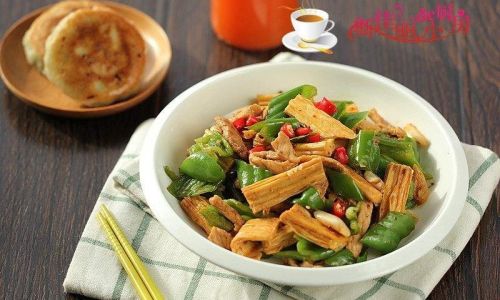
Variations and Regional Adaptations
While the classic recipe remains unchanged, regional variations highlight Sichuan’s culinary diversity. In Chengdu, cooks might add doubanjiang with a higher chili content for extra heat, while Chongqing versions might incorporate more garlic for pungency. Modern adaptations sometimes substitute pork with beef, chicken, or tofu, catering to dietary preferences. Vegetarian iterations use mushrooms or eggplant, absorbing the paste’s flavors beautifully.
The Cultural Significance of the Dish
Stir-Fried Pork with Broad Bean Paste is more than a meal—it is a cultural emblem. In Sichuan, it symbolizes huǒbào (fire cooking), a style of cooking that emphasizes speed, heat, and bold flavors. The dish is often served during family gatherings and festivals, embodying the Sichuanese spirit of xiāngqín xiāngài (mutual affection). Its affordability and simplicity also make it a comfort food, bridging generations and social classes.
Health and Nutritional Considerations
While the dish is undeniably flavorful, it is also relatively balanced. Pork provides protein and iron, while vegetables contribute fiber and vitamins. The fermented broad bean paste offers probiotics, aiding digestion. However, its high sodium content means moderation is advised, especially for those with hypertension. Home cooks can reduce salt by using low-sodium soy sauce and minimizing added salt during marination.
Common Mistakes and How to Avoid Them
- Overcooking the Pork: Slicing the meat too thickly or stir-frying at low heat results in tough, chewy pieces. Always slice thinly and use high heat.
- Under-Toasting the Broad Bean Paste: Skipping this step leaves the dish tasting raw and overly salty. Toast the paste until its color deepens and the aroma intensifies.
- Overcrowding the Wok: This causes steaming instead of searing, leading to soggy meat. Cook in batches if necessary.
- Using Low-Quality Paste: Inferior doubanjiang lacks depth. Invest in authentic Sichuan-made paste for the best results.
The Role of Fire and Heat
Sichuanese chefs often say, “Huǒ gōng shì chúfáng de línghún” (“Fire control is the soul of the kitchen”). Mastering heat is non-negotiable in stir-frying. The initial high heat sears the meat, sealing in juices, while lower heat gently mellows the aromatics and paste. This balance ensures each ingredient’s flavor shines without overpowering the others.
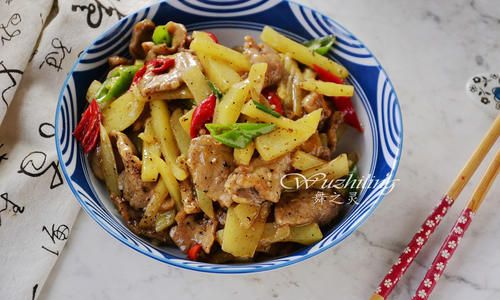
Pairing Suggestions
This dish pairs exceptionally well with:
- Steamed Jasmine Rice: To mellow the spice and richness.
- Pickled Vegetables: A Sichuanese staple, their tanginess cuts through the dish’s heat.
- Chilled Tofu: A refreshing contrast to the warm, spicy pork.
- Tea: A robust pu-erh or jasmine tea cleanses the palate between bites.
Sustainability and Ethical Considerations
Modern iterations of the dish often incorporate locally sourced, organic ingredients. Vegetarian alternatives using mushrooms or seitan reduce meat consumption, aligning with global sustainability trends. Additionally, some chefs experiment with house-made broad bean paste, eliminating preservatives and excess salt.
Conclusion
Stir-Fried Pork with Broad Bean Paste is a culinary masterpiece that transcends its humble origins. It embodies the essence of Sichuan cuisine—a harmonious blend of fiery heat, numbing spice, and umami-rich depth. While its preparation may seem straightforward, achieving perfection requires patience, practice, and a deep respect for tradition. Whether enjoyed in a bustling Chengdu night market or a home kitchen, this dish continues to inspire awe, proving that true flavor lies not just in ingredients, but in the hands that wield them. As Sichuan’s culinary legacy evolves, one thing remains certain: the sizzle of the wok, the aroma of fermented paste, and the tender bite of pork will forever define the soul of this iconic dish.
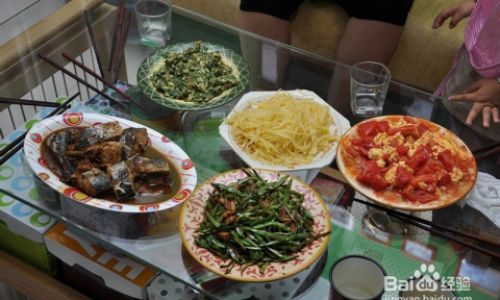


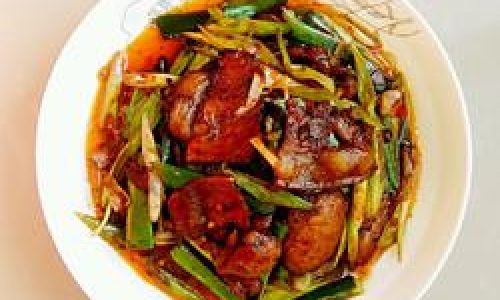

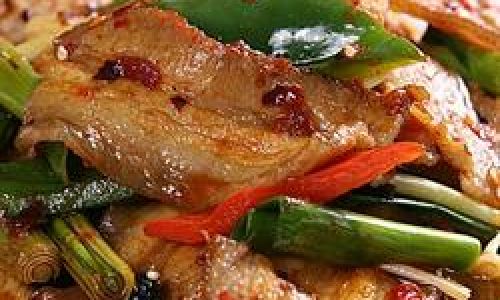
0 comments